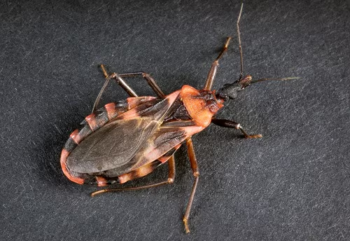State testing has corroborated local findings that two more San Diego County residents have died from West Nile virus, bringing the total number of county residents killed by the virus this year to four.
The four deaths are the most San Diego County has suffered in a single year. The two newly corroborated deaths include an 88-year-old Southeast San Diego man and a 91-year-old University City woman, both of whom had been previously reported as suspected West Nile virus deaths.
Statewide, 409 people have tested positive for West Nile virus this year and 18 have died.
West Nile virus is not transmitted from person to person, but can be transmitted to people if they’re bitten by mosquitoes that first feed on infected birds or animals. Most people who become infected never get sick and may never know they had the virus, but it can be deadly in very rare cases.
San Diego County’s Deputy Public Health Officer, Dr. Sayone Thihalolipavan urged county residents to remember to protect themselves from mosquitoes.
“Remember to wear long sleeves, pants and insect repellent if you’re going to be outside where mosquitoes may be, especially around dusk and dawn when they like to feed,” Thihalolipavan said. “And you should also look around inside and outside your homes to dump out standing water where mosquitoes can breed.”
As of Oct. 22, the County reported that in 2015:
- State testing reports 18 “confirmed” human cases including three deaths and four “probable” cases, including a fourth death (Note: the California Department of Public Health uses patient symptoms and blood and spinal fluid tests to classify possible West Nile virus cases as “confirmed,” “probable,” “suspected,” or “not a case.” However, for public reporting the state and County consider both “confirmed” and “probable” cases as West Nile virus human infections.)
- 15 presumed human cases of West Nile virus, including a fifth death.
- 290 dead infected birds recovered
- 45 batches of infected mosquitoes collected
- Six sentinel chickens testing positive for West Nile virus
San Diego County’s Department of Environmental Health takes numerous measures to keep the disease in check each year, including: using helicopters to drop larvicide that is harmless to people, pets and plants but deadly to mosquito larvae on 48 local waterways; hand treating another roughly 2,000 locations; giving out free mosquito-eating fish; targeting neglected swimming pools; and creating an extensive public education campaign.
County public health and environmental health officials urged people to follow the County’s Prevent, Protect, Report guidelines:
Prevent Mosquito Breeding: Dump out or remove any item inside or outside of homes that can hold water, such as plant saucers, rain gutters, buckets, garbage cans, toys, old tires, and wheelbarrows. Mosquito fish, available for free by contacting the Environmental Health Vector Control Program, may be used to control mosquito breeding in backyard water sources such as unused swimming pools, ponds, fountains and horse troughs.
Protect Yourself from Mosquito Bites: Protect yourself from West Nile virus by staying inside when most mosquitoes are most active, at dusk and dawn. Wear long sleeves and pants or use repellent when outdoors. Use insect repellent that contains DEET, picaridin, oil of lemon eucalyptus, or IR3535. Make sure screens on windows and doors are in good condition and secured to keep insects out.
Report Dead Birds and Green Swimming Pools: Report dead crows, ravens, jays, hawks and owls, and green swimming pools to the Environmental Health Vector Control Program by calling (858) 694-2888 or emailing vector@sdcounty.ca.gov.
For more information about West Nile virus, go to San Diego County’s “Fight the Bite” website.




